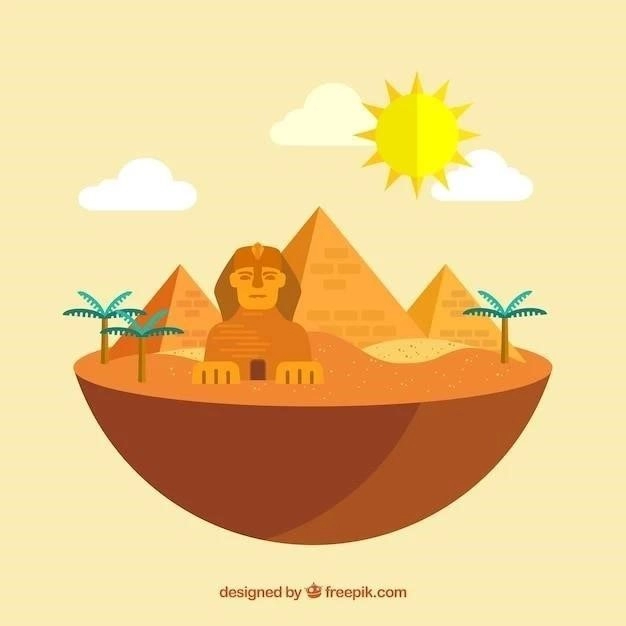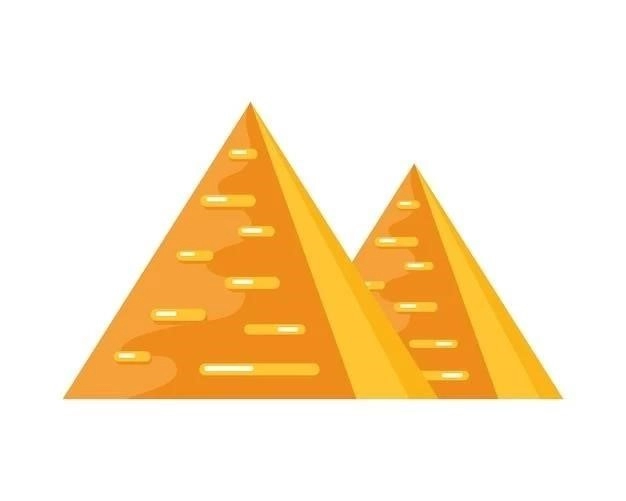The sands of Sudan conceal a treasure trove of ancient wonders, rivalling even the famed pyramids of Egypt in their sheer number․ Among these treasures stand the Pyramids of Meroe, a testament to the power and grandeur of the Kingdom of Kush․ This article delves into the history, architecture, and cultural significance of these often-overlooked marvels․

The Rise of Kush and the Birth of a Tradition
To understand the Pyramids of Meroe, we must first journey back in time to the rise of the Kingdom of Kush․ Flourishing between the 8th century BCE and the 4th century CE, Kush was a formidable force in ancient Northeast Africa․ While initially influenced by their northern neighbors in Egypt, the Kushites developed a distinct cultural identity, evident in their art, language, and funerary practices․
The Nubian pyramids, of which the Meroe pyramids are a part, stand as a testament to this unique cultural blend․ While inspired by the Egyptian tradition, the Kushite pyramids exhibit distinct characteristics․ They are smaller in scale, with steeper, more pointed sides, and are often constructed using sandstone blocks, as opposed to the limestone favored by the Egyptians․
Meroe: The Metropolis of Pyramids
Located approximately 200 kilometers northeast of modern Khartoum, Meroe served as the capital of the Kush Kingdom for several centuries․ At its zenith, Meroe was a bustling metropolis, a hub of trade and industry renowned for its ironworking prowess․ The citys prosperity is reflected in its sprawling necropolis, dominated by the majestic pyramids that have come to define the site․
The Pyramids of Meroe are not confined to a single location but are spread across three main burial grounds within the Meroe Island area․ These cemeteries, encompassing over 200 pyramids, offer a glimpse into the funerary practices and social hierarchy of the Kushite kingdom․
Architectural Features and Symbolic Significance
The pyramids themselves are striking architectural feats․ Unlike their Egyptian counterparts, which housed burial chambers deep within their core, the Meroe pyramids feature chapels built against their eastern faces․ These chapels, adorned with intricate reliefs depicting scenes from Kushite mythology and the lives of the deceased, served as spaces for offerings and rituals․
The pyramids orientation, with the entrance facing east towards the rising sun, holds symbolic weight․ It reflects the Kushite belief in rebirth and the suns journey as a metaphor for the cyclical nature of life, death, and resurrection․

Decline and Rediscovery
The Kingdom of Kush eventually succumbed to the pressures of internal strife and external threats․ By the 4th century CE٫ Meroe was abandoned٫ its once-great pyramids left to the mercy of the desert sands․ For centuries٫ they lay forgotten٫ buried beneath the dunes٫ their secrets hidden from the world․
It wasnt until the 19th century that European explorers rediscovered the Pyramids of Meroe․ Since then, archaeological excavations have unearthed a wealth of information about the Kushites and their remarkable civilization․ However, much remains to be discovered, and the site continues to captivate archaeologists and historians alike․

The Pyramids of Meroe Today
Today, the Pyramids of Meroe stand as a testament to the ingenuity and artistry of the Kingdom of Kush․ Recognized as a UNESCO World Heritage Site, they draw visitors from all corners of the globe, eager to witness the splendor of this ancient civilization․
However, the pyramids face an array of challenges․ Erosion, vandalism, and the impact of tourism pose a constant threat to their preservation․ Efforts are underway to protect and conserve these invaluable treasures for generations to come․
Conclusion
The Pyramids of Meroe offer a unique glimpse into a civilization that thrived alongside, and at times rivaled, ancient Egypt․ They stand as a testament to the power of cultural exchange, the fusion of traditions, and the enduring legacy of a kingdom that left an indelible mark on the sands of time;
Legacy of Power: Political and Social Structures Revealed
Beyond their architectural splendor, the Pyramids of Meroe serve as invaluable historical documents, offering profound insights into the sociopolitical dynamics of the Kushite kingdom․ The sheer number of pyramids, their varying sizes and levels of ornamentation, hint at a complex social hierarchy․
The largest and most elaborate pyramids, naturally, belonged to the monarchs themselves․ The presence of equally impressive pyramids dedicated to queens, however, points to a significant societal difference from Egypt․ This suggests that Kushite women, particularly those of royal lineage, wielded considerable power and influence within the kingdom․
Furthermore, the discovery of pyramids belonging to high-ranking officials and members of the elite underscores the importance of lineage and social standing within Kushite society․ The presence of grave goods, varying in richness and quality, buried alongside these individuals further emphasizes this hierarchical structure․
Artistic Achievements: A Fusion of Cultural Influences
The artistic motifs and decorative elements adorning the chapels and walls of the Meroe pyramids offer a fascinating glimpse into the cultural milieu of the Kushites․ While Egyptian influences are undeniable, evident in the presence of deities like Isis and Osiris, the pyramids also showcase a distinct Nubian artistic sensibility․
Relief carvings depict Kushite kings and queens in distinctive attire, adorned with elaborate jewelry and headdresses․ Scenes from daily life, including agricultural practices, hunting expeditions, and religious ceremonies, provide valuable insights into the cultural practices and beliefs of the time․
The use of vibrant colors, particularly hues of red, yellow, and blue, further distinguishes Kushite art from its Egyptian counterpart․ This fusion of artistic traditions, borrowing elements while forging a unique identity, speaks volumes about the dynamism and cultural sophistication of the Kingdom of Kush;

Ongoing Exploration: Unraveling the Mysteries of Meroe
Despite decades of archaeological investigation, the Pyramids of Meroe continue to hold secrets yet to be fully understood․ The Meroitic language, though partially deciphered, still poses challenges for researchers seeking to unlock the full narrative etched into the walls of these ancient tombs․
The exact process of pyramid construction, the materials used, and the labor force involved remain areas of active research․ New technologies, such as ground-penetrating radar and remote sensing, are being employed to map the necropolis and identify potential undisturbed burial chambers, promising further revelations in the years to come․
The Pyramids of Meroe stand not only as monuments to a bygone era but as enduring enigmas that continue to intrigue and inspire․ As researchers delve deeper into the sands of time, each new discovery brings us closer to understanding the full scope of the Kushite civilization and their place in the grand tapestry of human history․










